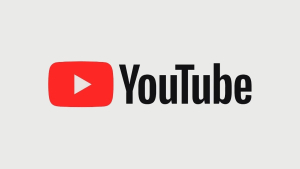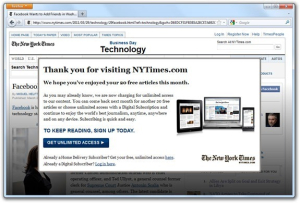
I’m not.
One of the primary obsessions of my 40-year career as a reporter has been journalism business models. How do you get money out of customers and leave yourself a profit? How do you replicate that process so that profits flow constantly through your business?
Northwestern’s Medill School taught that this was simple. You aggregated a group of readers based on their location, their industry or their lifestyle. You served them through your editorial effort. You monetized them by selling access to businesses in the form of advertisements, billboards along your editorial road. The price readers paid was the cost of delivering the paper to them. The editorial effort was paid for entirely by ads.
Even before graduating from Medill, 40 years ago last month, I was focused on the question of how writers and editors might make even more money, for even better work. I knew that the online world would let journalists do more than sell billboards. You can run an entire business here, taking people down the sales funnel, selling them goods or services, then supporting them after the sale. As early as the mid-1990s I was asking publishers, “How hungry are you,” and salivating over the possibilities.
The answer was that they were not very hungry at all. I remember back in late 1995, hiding in the back of an Atlanta Press Club Christmas party, laughing my butt off as Cox Enterprises CEO James Cox Kennedy, whom I’d once interviewed, talked about making easy money online by simply “repurposing” existing content. His naivete was hilarious, because even then I knew, in this new world, publishers would quickly find themselves competing with advertisers.

Everything that has happened to journalism since that day has been a predictable outgrowth of what I saw then.
Today the “programmatic ads” which resulted from the Doubleclick process dominate all media. What happened to print journals is going to happen to video journalists, and to video content producers. They don’t know it yet, but there’s a strict limit of time for streaming companies to work through. Every viewer has just so many hours in the day to devote to video content. Expecting them to pay $200 per month to fill 90-120 hours and pay for things they’re not going to watch, is unrealistic.

Technology is digital, not analog. You win everything or you’re nothing. This is as true in journalism as anywhere else. Only three publishers have made it through the programmatic window with profitable paywalls and general interest publications. The New York Times, The Wall Street Journal, and The Washington Post, however, are still newsletters, albeit with large circulations, because most people can’t read them. It will take enormous investment to contend against them. They consume the entire ideological spectrum among them, and their market leads give them the opportunity to occupy other niches – business, entertainment, and technology itself. Within a few years, I expect them all to figure out how to do local news as an add-on.

There’s more than industry danger here. There’s political danger, and societal danger, as we’ve already seen. If the Cloud Czars – Google, Facebook, Amazon, Microsoft and Apple – want to maintain their influence (and wealth) this is a problem they need to grab hold of.
Because there is another business model for news. Political patronage. Increasingly, print and broadcasting outlets which see their own business models failing are selling out to wealthy political contributors, men (for the most part) who want nothing more (or less) than to control what people think.
This is at the heart of all our current crises. Our political crisis and our social crisis are wedded as one to this crisis in business models for news. Maintaining open access to unbiased information about what is going on is essential to democracy. Without it, our system of government can’t survive.

My proposal was an open source system for daily paywalls that all journals can easily access, one that will pay them what they want as content is consumed. It could be based on RSS, or some other technology. What matters is that this “per-copy paywall” system be transparent, that it be available to all readers and journals, and that it demand publishers compete for readers.
This can still be built off the existing Google Subscribe tool, or an RSS tool like Feedly, but unless per-day or per-copy pricing is introduced the opportunity will be lost, certainly to Google, and possibly too to the rest of us.
Until readers can buy daily (or hourly) access to the news they need, the current business model crisis in news will continue, and so will ever other crisis that flows from it.









